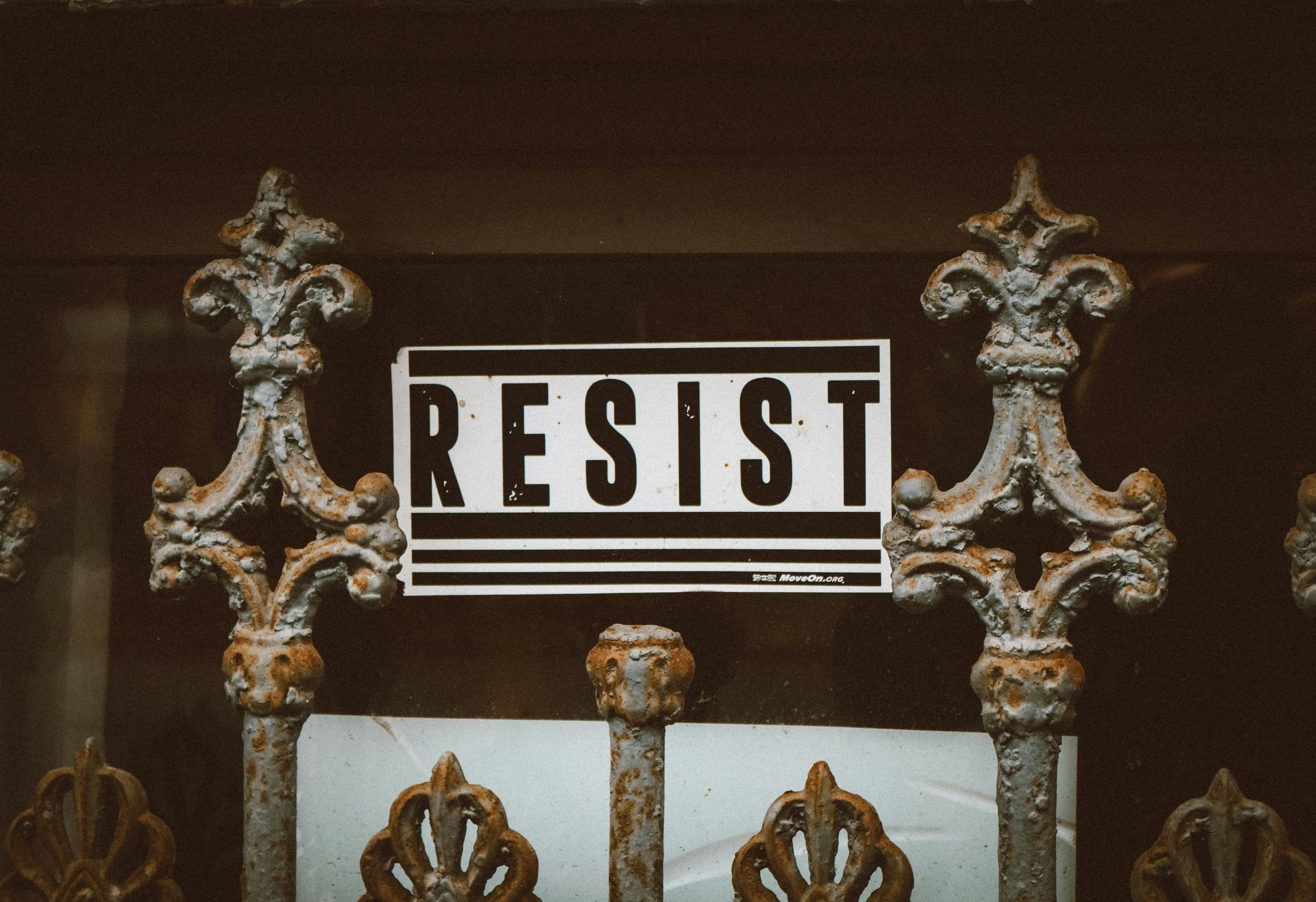I was in Norristown, Pennsylvania, a couple days after the election. I went to celebrate the five-year anniversary of the Reuniting Family Bail Fund and participatory defense hub there. With the election so fresh, it was an awkward time to be at any sort of celebration—and in Pennsylvania, no less, since the state had received so much attention, first as a swing state and then as a swing state that had helped to elect Donald Trump. In diverse, working-class Norristown, the mood was somber, as though election fallout was gathering like storm clouds.
But the celebration itself was immune to any of that heaviness. Inside a warehouse turned community creative space, multiple generations of families had gathered to mark the fact that—through their connection to the bail fund or participatory defense hub—they or a loved one had been freed. The food, shirts, and swag being handed out were made by these same families to broadcast how this community had spared them from years of separation. The walls were lined with paintings from formerly incarcerated artists. People shared testimonies of what these last five years of building community power had meant to them, who was home as a result of it, and what they were doing with their lives now.
Against the political backdrop of what was happening in the country, it didn’t feel like being at an event: it felt like being inside a fortress. A community had joined together to fortify itself, celebrate one another, recommit to their bonds, and protect themselves from the forces outside.
So, yeah, just days after the election—in Pennsylvania, of all places—I saw something clear, achievable, and meaningful to do at a moment when threats are aimed at those we love. I saw how we can build our fortresses.
The political energy for many of us for the last year or so has been focused on electoral campaigns, politicians, and voting results. That gravity of attention may have been deserved at that time. But now, we must shift our focus to thinking about how our communities, which will bear the brunt of those electoral decisions, will fortify ourselves for the coming years. We must be prepared to meet our own needs via mutual aid, and what we construct, rather than through the conventional framework of appealing to governmental assistance.
Ballot Box Time Machine
After Norristown, I came back to a California that used the ballot box like a time machine. It voted to go back in time to the War on Drugs era and the Three Strikes era through the passage of Proposition 36, which restores previously overturned “tough on crime” lengthy sentences for theft and drug possession. California also had the opportunity to end forced labor in prisons, and voted instead to maintain slavery for the incarcerated through Proposition 6.
There are many signs that we are entering into another period that will later be described as an “era.” The kind that is given a name by historians as they reflect on and try to explain the magnitude of damage done by a span’s policies and laws. Those wounds are noticeable already, waiting to be worsened by the actions the just-elected will take once they’re in office. These early warning signs arise from the same politics that led to the election results—the one that publicly validated racism, mass incarceration, mass deportation; the one that calls for elimination not of poverty and suffering, but of the poor and those who suffer.
Decarceral thinkers and doers
Every week, Inquest aims to bring you insights from people thinking through and working for a world without mass incarceration.
Sign up for our newsletter for the latest.
Newsletter
Last week, an elderly Black man came into our Silicon Valley De-Bug office in San Jose, California, to show us a video from his phone. In it, he was shopping at his local grocery store, the one across the street from his home, at which he’d been shopping for years. The video shows a young white manager following him around and telling the man to leave the store. The manager suspected he was going take something, or make a mess, or be disruptive in some way. In short, his presence was not welcome—perhaps had never been welcome, but in this moment such racist sentiments can now be said out loud, even encouraged, applauded.
The shopkeeper’s tirade didn’t take place in a vacuum. San Jose’s local police and sheriffs, even the city’s mayor, have started posting images of people arrested for being accused of taking things at stores. They are social media perp walks, mainly of young people, shown handcuffed in front of some big box store with an accompanying caption: “Caught red-handed!” In one post I saw from the sheriff’s office, such items as “over counter medicine, beauty products . . . even Oatmeal Cream Pies” were listed as among the allegedly stolen goods, accompanying a curated photo of the products. It got likes and retweets, as well as comments calling on the sheriff’s office to “show [the accused’s] faces,” the better to publicly shame.
Meanwhile, an immigrant member of our community was told by his attorney that he may want to suspend his efforts to receive documentation—because being on the radar of ICE right now might expose him to state violence. And so, feeling defenseless against the very real threat of raids, he is contemplating terminating his process to seek status. For many, vulnerability is a gradience: there is no safe, so the only available choice is to try to game out what may be less dangerous than the alternative. This absence of safety will surely be a hallmark of our new era, whatever historians end up calling it.
And this same week in the neighboring community of Santa Clara, a fourteen-year-old boy committed suicide after being tormented by peers and adults at his school, his dad says, for being homeless. Some would say it is impossible to draw a causal link between a child taking his own life—after being picked on and humiliated because of his poverty—and the politics of the day. But I can’t not see it. San Jose has already declared that encampments and RVs can’t be anywhere near schools. Our city’s government has created protective zones to shield students from the potential of interactions with the houseless. To be without a home in Silicon Valley is to be an inherent danger and threat to the innocent. So a homeless kid on campus, on the football team, having his first exploratory months as a high school student, becomes a target to condemn, vilify. He is a child who has not survived this new era, perhaps was sacrificed to it.
Fortresses Beyond Walls
This is why I find lifesaving hope in the fortress I saw that night in Norristown. A fortress is shelter and protection and solace. It takes different shapes: it can be a temporary gathering, an ongoing practice, something that can exist within and beyond the limitations of structures like buildings and organizations.
Through this lens, now when I see families in San Jose who have lost loved ones to police and who are organizing to create non-police responses to crisis—barricading against the hyper-policing that will be a feature of this era—what I feel like I’m seeing is the construction of a fortress. The same when I watch the work of the South Bay Land Trust, which is creating ways for people from San Jose, now the costliest places to live in the country, to be able to stay here. The homes they purchase, and which the community then owns, are citadels too, declarations that our people will survive here despite the machinations of a city hall controlled by the whims of capital.
Cultural fortresses are more important than ever, too. A month before the election, Souleros Ball—a celebration of Chicano culture featuring DJs spinning oldies, vinyl record exchanges, and live bands—drew over a thousand people. A featured speaker engaged the crowd in political education, explaining how Prop 36 was designed to lock up Black and brown communities. But it was all oriented around an affirmation of cultural identity, history, and resilience in a moment when the prevailing politics is trying to vanish those same communities. And that kind of resistance is everything.
And every week at De-Bug, families who are being threatened by incarceration or deportation set up their fortress through participatory defense meetings. Moms, dads, children, and spouses set their chairs in a circle and talk through their strategies for how to defend against their loved ones being taken from them. And now, those forces that cause family separation are more equipped and emboldened than ever. In many ways the gatherings are support groups for how to endure being in the crosshairs of the state—but they’re also a war room. Those inside the fortress are not quivering; they are planning, strategizing, recruiting.
Image: Jon Tyson/Unsplash

